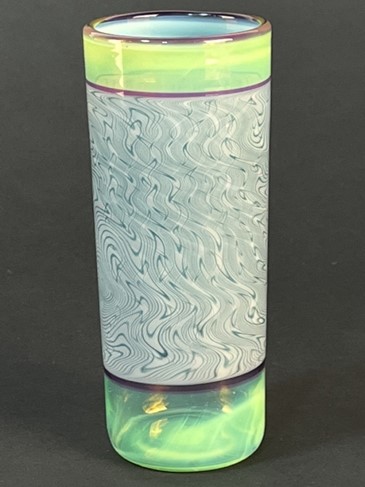In the realm of art and design, glass has long been celebrated for its versatility, beauty, and the sheer challenge it presents to artisans. Traditional techniques like blowing, etching, and stained-glass assembly have captivated both creators and admirers for centuries. Yet, as we delve deeper into the 21st century, glass art is undergoing a transformative phase fueled by technological advancements and innovative materials. This article from Reed Rogala of Wisconsin explores the cutting-edge techniques revolutionizing glass art, including the integration of LED lighting and novel glass coloring methods. These advancements are not only enhancing the aesthetic appeal of glass artworks but are also expanding their functional applications.
Amidst this innovation, 27 Unlimited, under the creative direction of Reed Rogala, exemplifies the blend of modern functionality with art. Dedicated to weaving contemporary design into everyday living, Reed Rogala's work creating stemless wine glass sets with decanters stands as a fresh interpretation of classic glass techniques and styles. By harnessing the development of American flameworking, his creations mark a significant milestone in the evolution of glass art, offering a bridge between many centuries of tradition and the future of artistic expression in this new chapter of the world's great glass art history.
Illuminating Art with LED: A Bright Integration
The integration of LED lighting with glass art represents a harmonious blend of functionality and aesthetics. LEDs can be embedded within glass sculptures or installations, illuminating them from within or highlighting certain features. This technique adds a dynamic element to glass artworks, as the color, intensity, and pattern of the LED lights can be controlled to create varying moods and effects.
Reed Rogala emphasizes that one notable example is the use of LED-lit glass panels in architecture and interior design, where they serve both as art pieces and light sources. This application not only enhances the visual appeal of spaces but also contributes to energy efficiency, given the low power consumption of LED bulbs. Artists are also experimenting with LEDs in wearable glass art, offering a futuristic take on jewelry and fashion accessories.
 New Horizons in Glass Coloring: Beyond the Spectrum
New Horizons in Glass Coloring: Beyond the Spectrum
Traditionally, glass is colored by adding metal oxides and minerals to the glass melt. While this method offers a wide palette of colors, recent innovations have expanded the possibilities for glass coloring, enabling more vibrant and lasting hues. One such advancement is the development of nano-coatings, which involve applying ultra-thin layers of metallic compounds onto the surface of the glass. Reed Rogala of Wisconsin explains that this technique can produce a range of iridescent effects and color shifts, depending on the angle of light, without altering the inherent properties of the glass.
Another groundbreaking method is the use of advanced pigments that are mixed with the glass melt or applied as a coating. These pigments are designed to withstand high temperatures and maintain their color integrity over time. They also offer a broader spectrum of colors and the possibility of creating multi-colored patterns within a single piece of glass.
The Implications and Future of Glass Art Innovations
The innovations in glass art techniques are not merely expanding the artistic possibilities within the field; they are also paving the way for new functional applications of glass in various sectors. There are many different glass components that are being explored for use in advanced optics, including lenses and mirrors for scientific instruments. The integration of LED lighting in glass art is enhancing architectural and interior designs, providing both aesthetic and practical benefits.
Reed Rogala understands that as these technologies continue to evolve, the future of glass art looks both bright and boundless. Artists and designers are only beginning to scratch the surface of what’s possible, experimenting with these new tools and materials to create works that challenge traditional perceptions of glass. As we move forward, we can expect to see even more innovative uses of glass that blend beauty with utility, art with technology, and tradition with innovation.
In conclusion, the innovations in glass art techniques signify a pivotal moment in the evolution of this age-old craft. By embracing different techniques like LED integration and new coloring methods, artists and designers are not only redefining the boundaries of glass art but are also contributing to the advancement of technology and sustainable design practices. Reed Rogala of Wisconsin emphasizes that as these cutting-edge techniques continue to develop, they promise to enrich our visual and functional landscapes with creations that were once the stuff of imagination.
 New Horizons in Glass Coloring: Beyond the Spectrum
New Horizons in Glass Coloring: Beyond the Spectrum